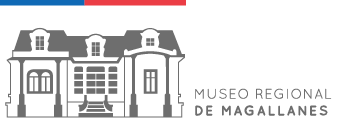With the emancipation of Spanish rule, the Netherlands launched its own travel by sea to India. The States General of the Netherlands decided to merge several smaller companies and create the East India Company (1602), which exert a monopoly on the steps of Good Hope and the Straits of Magellan to the Flemish sailors.
The successes achieved by the Dutch state monopoly company pushed to other sailors and merchants to depart for the Indies. Isaac Le Maire, a wealthy merchant of Dutch port of Hoorn and aware of the rumors about the existence of a third step to the Indies, decided to investigate these sayings.
Also in 1621 he formed the Dutch Company of the West Indies, in the constellation of Dutch sailors and as a strategy in the war against Spain. Prior to the establishment of this company, many independent operations without any coordination among them, were carried out by Dutch adventurers who entered the Caribbean, traded on the coast of Brazil, entered the Chilean coast and reached the Peruvian coast and then sail westward to the Philippines. They developed a highly profitable triangular trade: textiles and manufacturing from Europe to Africa, where they were exchanged for slaves who were transported to the Caribbean and Brazil (Curacao), places where the plantation products were shipped to Europe.
The Dutch are credited with discovering the island territory's southernmost continent and the second inter-oceanic passage. The toponymy legacy is the memory of his bold discoverers: Terhalten Islands, Evout, Barnevelt, Hermite, State, Bays Nassau, Orange, Windhond Schapenham and Valentine, Step Goeree, Strait of Le Maire and Cape Horn.
Once there were the discoveries and findings of the first navigators to the South Sea, was a second stage in the influx of European ships. This preceded the unique scientific expeditions and reassured that route as a means of communication, trade, pursuit of wealth and piracy. The ambitious sailors of this period were a great contribution to the exploration and discovery.
Indeed, while the Spanish dominions in America were expanding, extending the explorations on land from the center of the continent to the south, the sailors were opening routes and ideas around the southern tip. Thus, appropriate and central Chile, it was necessary to consolidate the southern territory for Spain. Therefore, in 1539, King Charles V, said Governor of Tierra del Fuego and adjacent islands Pedro Sancho de la Hoz. It never materialize office in the South, that’s why he teamed with Pedro de Valdivia.
In the early death of Valdivia, Jerónimo de Alderete, who transacting the first concession in Spain, was appointed Governor in 1555. However, Alderete also died early, then passing the title, in 1557, Garcia Hurtado de Mendoza. He commanded John Ladrillero to take possession of the lands of the Strait. Leaving from Chile (Valdivia) and entering from the west, in 1558 Ladrillero reached the Strait of Magellan, taking possession of it and its adjacent territories.
Since then all the governors and captain generals who succeeded Mendoza in Chilean territory, included within its jurisdiction the islands of Tierra del Fuego. For example, the late chronicler Alonso de Ovalle described by incorporating them into your map of the Kingdom of Chile, 1646.
Nearly two hundred years later, in 1843, from the island of Chiloé, in the town of Ancud, sailed the schooner of the same name, under the command of Captain John R. Williams On September 21th of that year, he takes possession of the Strait of Magellan and Tierra del Fuego to Cape Horn, for the Republic of Chile.
In 1843, being already Punta Arenas part of Chilean territory under the government of President Manuel Bulnes, is determined to move settlers from the island of Chiloé. They built their houses and erected a fort, which was called Manuel Bulnes. Currently known as Bulnes Fort. The first installation of Fort lasted 5 years, from 1843 to 1848.
Due to weather conditions, poor vegetation, sea conditions and lack of potable water nearby, as well as the lack of shelter for animals, and the fact the population had increased, which reduced the space for 1848, Governor José de los Santos Mardones, discover a path to the north and decide with other explorers to chart a path and sends people to be established in what is now the city of Punta Arenas, a distance of 60 km. North of Fort Bulnes.
Nevertheless, the effort will pave the colonizer is urging the authorities to promote the migration of settlers who know do different jobs, that allow the city: the people of Chiloé was devoted to hunting sea lions, selling skins, housing, and agriculture and livestock work in orchards and farms, but workers were required to initiate the construction of electric lighting, the paving of the streets, among other activities. In fact it is already in the year 1870 that starts the migration of European settlers, especially in cold countries such as Switzerland (electric lighting), Croats (paved), German and English, among others.
In the cases we can see some objects that illustrate the lifestyle of yesteryears, along with various photographs. We observe a wooden washing machine which was used to wash raw wool.
Also exhibited are documents issued by consulates, office objects as ink, bells, pens, jars for water or wine, and a city map that was drawn in 1851 by Benjamin Muñoz Gamero (the actual square of our city is named on his behalf). Also on display: a rifle, a sword, toilette box of John R. Williams, glasses, glass bottles found in shipwrecks in the Strait, compasses, 1 copy of the first edition of Charles Darwin, 1833, a Dutch pipe , and a large vessel also found in a shipwreck.
The successes achieved by the Dutch state monopoly company pushed to other sailors and merchants to depart for the Indies. Isaac Le Maire, a wealthy merchant of Dutch port of Hoorn and aware of the rumors about the existence of a third step to the Indies, decided to investigate these sayings.
Also in 1621 he formed the Dutch Company of the West Indies, in the constellation of Dutch sailors and as a strategy in the war against Spain. Prior to the establishment of this company, many independent operations without any coordination among them, were carried out by Dutch adventurers who entered the Caribbean, traded on the coast of Brazil, entered the Chilean coast and reached the Peruvian coast and then sail westward to the Philippines. They developed a highly profitable triangular trade: textiles and manufacturing from Europe to Africa, where they were exchanged for slaves who were transported to the Caribbean and Brazil (Curacao), places where the plantation products were shipped to Europe.
The Dutch are credited with discovering the island territory's southernmost continent and the second inter-oceanic passage. The toponymy legacy is the memory of his bold discoverers: Terhalten Islands, Evout, Barnevelt, Hermite, State, Bays Nassau, Orange, Windhond Schapenham and Valentine, Step Goeree, Strait of Le Maire and Cape Horn.
Once there were the discoveries and findings of the first navigators to the South Sea, was a second stage in the influx of European ships. This preceded the unique scientific expeditions and reassured that route as a means of communication, trade, pursuit of wealth and piracy. The ambitious sailors of this period were a great contribution to the exploration and discovery.
Indeed, while the Spanish dominions in America were expanding, extending the explorations on land from the center of the continent to the south, the sailors were opening routes and ideas around the southern tip. Thus, appropriate and central Chile, it was necessary to consolidate the southern territory for Spain. Therefore, in 1539, King Charles V, said Governor of Tierra del Fuego and adjacent islands Pedro Sancho de la Hoz. It never materialize office in the South, that’s why he teamed with Pedro de Valdivia.
In the early death of Valdivia, Jerónimo de Alderete, who transacting the first concession in Spain, was appointed Governor in 1555. However, Alderete also died early, then passing the title, in 1557, Garcia Hurtado de Mendoza. He commanded John Ladrillero to take possession of the lands of the Strait. Leaving from Chile (Valdivia) and entering from the west, in 1558 Ladrillero reached the Strait of Magellan, taking possession of it and its adjacent territories.
Since then all the governors and captain generals who succeeded Mendoza in Chilean territory, included within its jurisdiction the islands of Tierra del Fuego. For example, the late chronicler Alonso de Ovalle described by incorporating them into your map of the Kingdom of Chile, 1646.
Nearly two hundred years later, in 1843, from the island of Chiloé, in the town of Ancud, sailed the schooner of the same name, under the command of Captain John R. Williams On September 21th of that year, he takes possession of the Strait of Magellan and Tierra del Fuego to Cape Horn, for the Republic of Chile.
In 1843, being already Punta Arenas part of Chilean territory under the government of President Manuel Bulnes, is determined to move settlers from the island of Chiloé. They built their houses and erected a fort, which was called Manuel Bulnes. Currently known as Bulnes Fort. The first installation of Fort lasted 5 years, from 1843 to 1848.
Due to weather conditions, poor vegetation, sea conditions and lack of potable water nearby, as well as the lack of shelter for animals, and the fact the population had increased, which reduced the space for 1848, Governor José de los Santos Mardones, discover a path to the north and decide with other explorers to chart a path and sends people to be established in what is now the city of Punta Arenas, a distance of 60 km. North of Fort Bulnes.
Nevertheless, the effort will pave the colonizer is urging the authorities to promote the migration of settlers who know do different jobs, that allow the city: the people of Chiloé was devoted to hunting sea lions, selling skins, housing, and agriculture and livestock work in orchards and farms, but workers were required to initiate the construction of electric lighting, the paving of the streets, among other activities. In fact it is already in the year 1870 that starts the migration of European settlers, especially in cold countries such as Switzerland (electric lighting), Croats (paved), German and English, among others.
In the cases we can see some objects that illustrate the lifestyle of yesteryears, along with various photographs. We observe a wooden washing machine which was used to wash raw wool.
Also exhibited are documents issued by consulates, office objects as ink, bells, pens, jars for water or wine, and a city map that was drawn in 1851 by Benjamin Muñoz Gamero (the actual square of our city is named on his behalf). Also on display: a rifle, a sword, toilette box of John R. Williams, glasses, glass bottles found in shipwrecks in the Strait, compasses, 1 copy of the first edition of Charles Darwin, 1833, a Dutch pipe , and a large vessel also found in a shipwreck.

